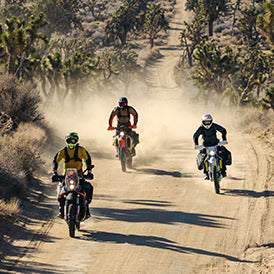Your Cart is Empty
Free Shipping On Orders Over €200
Luggage
Apparel
Events
The Mosko Blog
The Mosko Mule (Product Testing)
January 15, 2016
The Mosko Mule (Product Testing)
January 15, 2016
We’ve been looking for a reliable, consistent way to test bags and mounting systems. Riding is one way, and obviously we’re not going to stop doing that, but we wanted a way to exert more abuse in less time, and with more objectivity.
The testing question came to the forefront last week when the first samples of our new injection molded wedge & frame arrived. In form and function the new wedge/frame are similar to the current ones, but in the way they’re made and the materials used, they’re completely different. The current frame/wedge are CNC milled from a continuous sheet of HDPE, whereas the new frame/wedge will be injection molded from glass-filled nylon. Mainly we just want to make sure the new ones will work as well or better than the old ones.

The Mosko Mule
The Mosko Mule (thanks for the great name Reg Kittrelle!) is our version of a “shaker table” test. It’s a vintage Honda CB 175 frame we bought at a junkyard a few years ago, with the front wheel removed and mounted to a trailer hitch. On the rear wheel we mounted an old paddle tire from my dirt bike, then we cut off a few of the paddles and wrapped a chain around the tire to generate an irregular cadence. We welded the suspension in a fixed position so it wouldn’t absorb the bumps, and we added the old wolfman pannier racks from my 950SE.






The result looks wacky but it really works. Last week we loaded a pair of Backcountry 25 panniers – one with the current HDPE frame/wedge and one with the new injection molded version – with sand and gravel. Including the weight of the pannier, they weighed ~48 pounds each. We were looking for a) wear points, b) distortion, c) deformation, and d) excessive flexing/bowing. The mule makes a bunch of noise and gets a lot of funny looks on the road.

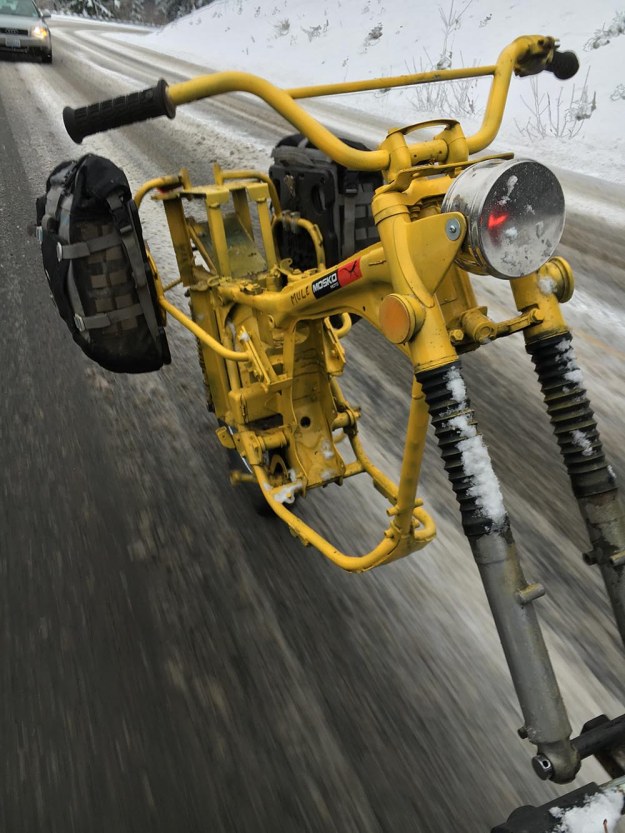
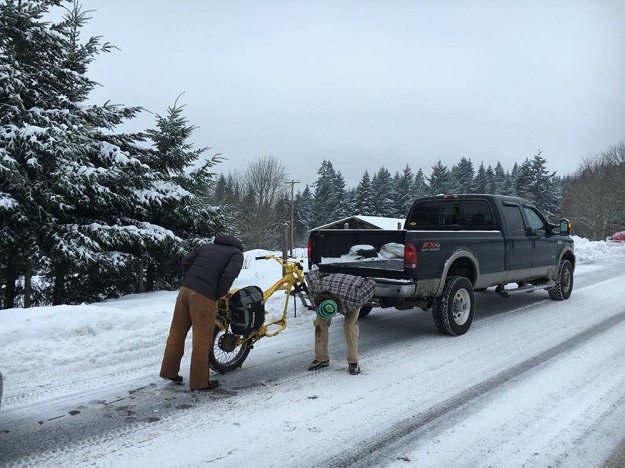
Here’s some video.
We were really stoked with how the new frame/wedge performed. Nothing bad to report, and there was noticeably less bowing and flexing when we reviewed the results on video in slow motion.
Moisture Absorption
For moisture absorption, we let the parts soak for 3 days in lukewarm water. When they mold nylon they do it a very low moisture environment. Once the part has been manufactured, there’s a tendency for the nylon to absorb moisture, which can cause minor dimensional variations. After three days in water the changes were negligible and the parts still worked fine.

Heat
For heat we used a heat gun to raise the temperature of the frame and wedge and then hand-tested it by sliding the wedge in and out. Again, no noticeable impact. Nylon has better thermal stability than HDPE, so no surprises there.

Strength
To test the strength Lee used a hand winch from a boat trailer and a load cell.

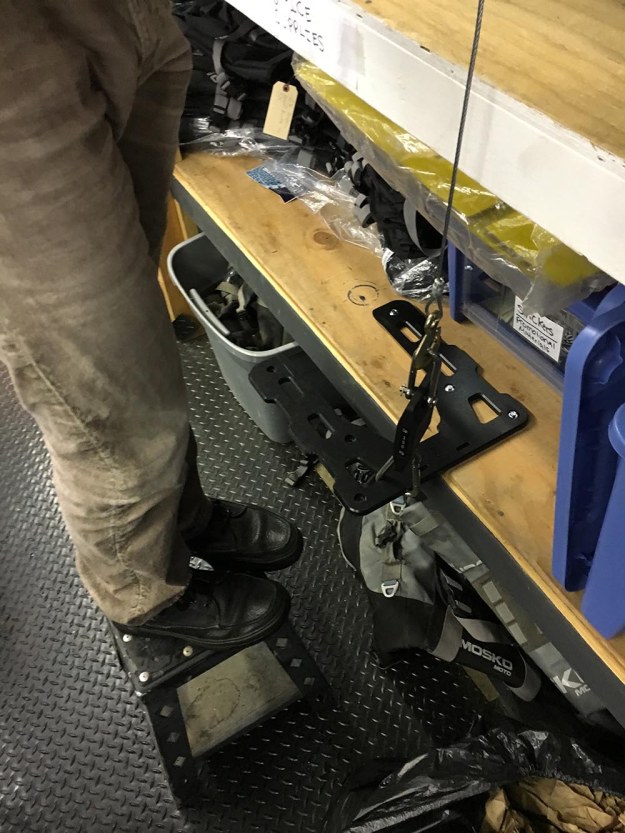

The HDPE frame gave way at 170 pounds. One thing we noticed was the amount of deformation before it breaks. Even though the part is still holding at 160 pounds, from a practical perspective, in the eyes of a user, it would have already ‘failed’ long before that point based on deformation alone.
Here’s the deformation on the HDPE part after breaking.


Here’s the test on the nylon version. It broke at 200 pounds, and note how much less deformation occurs before breaking.
We already knew from the material specifications that glass filled nylon has a lot of advantages over HDPE, so many of the tests we did were to confirm that those advantages still apply in our unique application. They did.
Mica, owner of the injection molding factory, was in Hood River last week, visiting from Hong Kong, so we were able to sit down in person to review the test results and discuss various options for surface finishes.
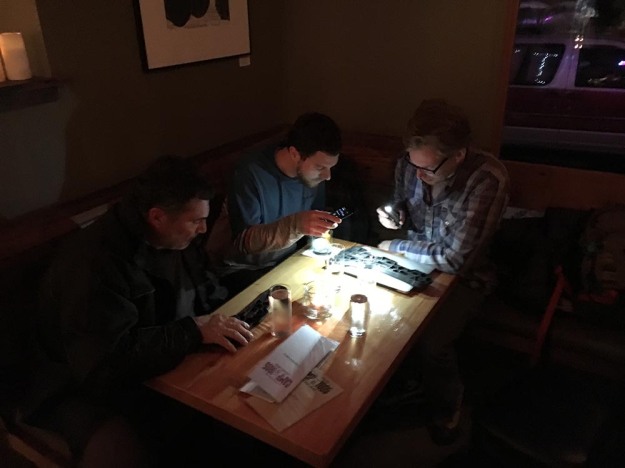
The new frame/wedge should be available sometime this fall.
New Beavertail Design
Also last week, we tested the new map pocket on the beavertail for the Scout 25/60L roll top duffles. This beavertail has a map pocket on one side and MOLLE webbing on the other. It’s made from 4 separate layers: a clear vinyl layer, an inner PVC layer, a foam layer, and a hypalon layer. These layers are welded around the outer edge, then finished with seam-binding, however the seam binding is limited to the welding seam so it won’t affect the waterproofing of the pocket itself.We’re using a zip lock closure instead of the standard water resistant zipper you see on many bags (which are NOT actually waterproof, only water resistant, contrary to many marketing claims). The zip lock is slightly more of a hassle to operate than a zipper, but it’s fully waterproof.
We put a dry paper towel in the beavertail and left it fully submerged for 2 hours. It came out bone dry, the pocket’s waterproof. I would have no concerns leaving a phone or camera in this pocket during a rainstorm.

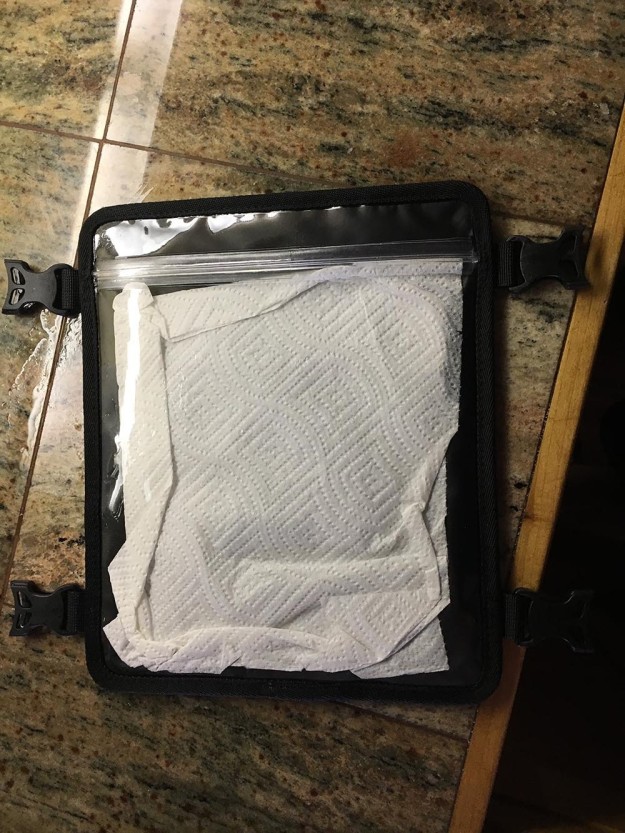
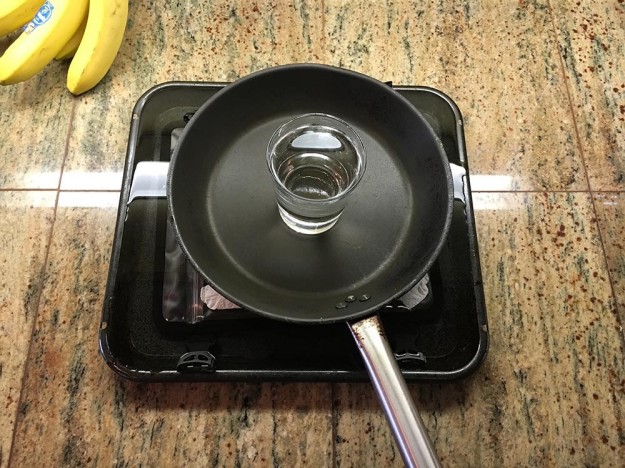

Overland Expo
We had a funny moment in our staff meeting last week. We were trying to remember the dates for Overland Expo West (it’s May 20-22) so Lee and I pulled up the Overland Expo website on two different computers at the same time. Both pages featured Mosko pics!
Very cool, can’t wait!!

Warranty and Crash Replacement
We never cut corners during development or manufacturing, so we stand behind our products. If one fails due to a problem with materials or workmanship, we’ll make it right.
Your are successfully subscribed for email notifications.
Notify me when available
We will send you a notification as soon as this product is available again.
Your email is required
We don't share your email with anybody
x





